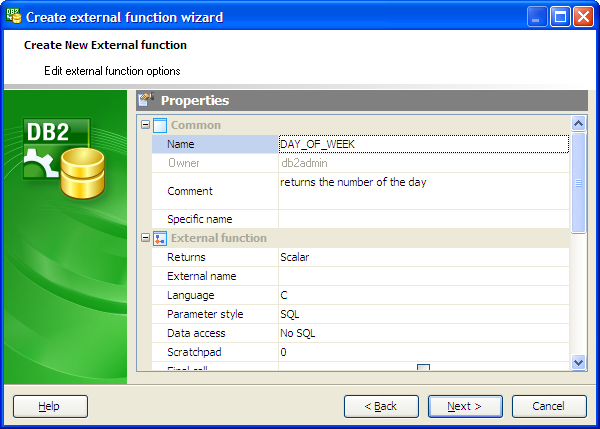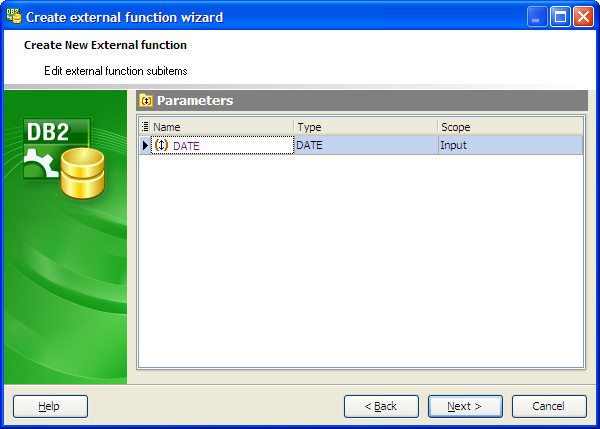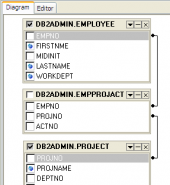DB2 Maestro online Help
| Prev | Return to chapter overview | Next |
Create External Procedure Wizard
Create External Procedure/Function Wizard guides you through the process of creating a new procedure/function. See How To Create Procedure for instructions on running this wizard.
The basic principles of Create Object Wizards in DB2 Maestro are covered by the corresponding topic. See below to find the description of wizard steps that are unique to the current object.
See also: External Procedure/Function Editor
First wizard step allows to set procedure options according to your needs.

Name
The new procedure name as it was set on the previous step.
Owner
Defines the owner for the procedure. By default, only the owner of an object can perform various operations with the object. In order to allow other users to operate it, privileges must be granted. (However, users that have the superuser attribute can always access any object.)
Comment
Specify a comment for the procedure.
Parameter style
This clause is used to specify the conventions used for passing parameters to and returning the value from procedures.
Specific name
Provides a unique name for the instance of the procedure that is being defined. This specific name can be used when dropping the procedure or commenting on the procedure. It can never be used to invoke the procedure.
Data access (Contains SQL, Reads SQL data, Modifies SQL data)
Indicates the level of data access for SQL statements included in the procedure.
Contains SQL indicates that SQL statements that neither read nor modify SQL data can be executed by the procedure. Statements that are not supported in procedures might return a different error.
Reads SQL data Indicates that some SQL statements that do not modify SQL data can be included in the procedure.
Modifies SQL data indicates that the procedure can execute any SQL statement except statements that are not supported in procedures.
Dynamic result sets
Indicates the estimated upper bound of returned result sets for the procedure.
The description of the other External Function properties you can find in DB2 SQL Reference Volume 2.
On the second step you can easily specify the procedure parameters. Use the pop-up menu or press Insert to add a new parameter and set its properties in Parameter Editor. Press Enter or use the appropriate pop-up menu item to edit the selected parameter, or the Delete to delete one.

| Prev | Return to chapter overview | Next |





 Download
Download Buy
Buy
